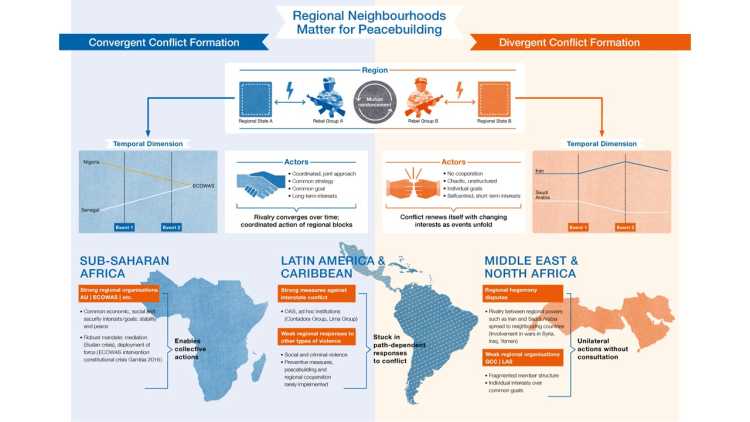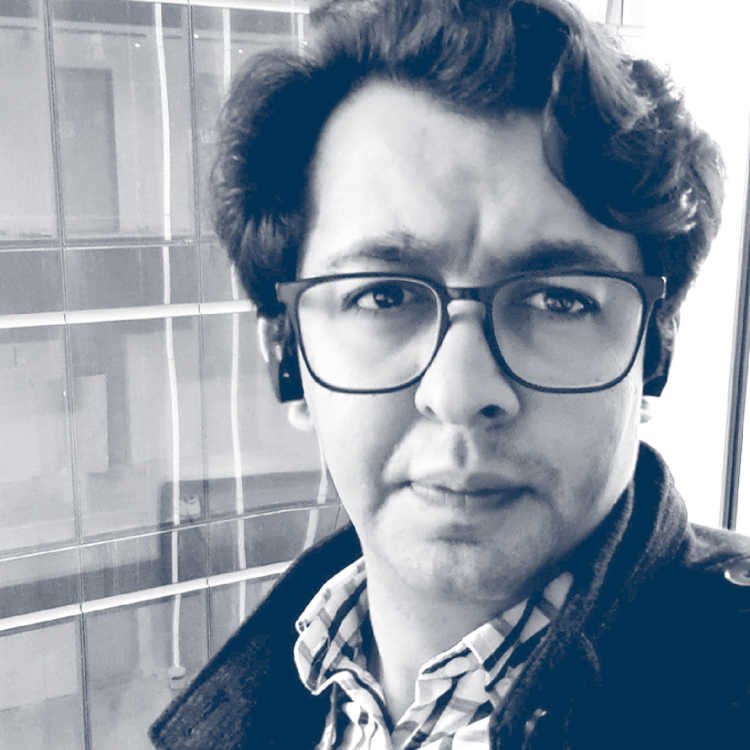- Home
- Publications
- GIGA Focus
- Neighbourhood Matters for Peacebuilding
GIGA Focus Global
Neighbourhood Matters for Peacebuilding
Number 1 | 2021 | ISSN: 1862-3581

Academic and political debates on peace and conflict dynamics increasingly acknowledge the relevance of the interaction between global and subnational or local dynamics but rather neglect the regional neighbourhood as an important intervening variable. The concept of “regional peace formations” either as an enabling or hindering factor for peacebuilding fills this gap. Empirical evidence from Latin America, the Middle East, and sub-Saharan Africa shows the added value of the concept for explaining regional differences.
Peacebuilding is a complex undertaking shaped by a variety of factors such as the nature of conflicts, the actors involved, and local contexts. A regional perspective regarding patterns of conflict and violence shows high levels of variation between regions.
The concept of regional peace formations is an important tool to analyse the region-specific variation in actors and conflict dynamics. It allows us to identify either convergent or divergent contexts for peacebuilding.
Empirical evidence from Latin America, the Middle East, and sub-Saharan Africa identifies relevant differences and the need to incorporate regional factors into peacebuilding strategies.
Policy Implications
The regional level of peacebuilding offers the possibility for meaningful donor coordination and joint multilateral action. But a minimalistic approach seeking only the end of war or a certain degree of stabilisation is not enough. Initiatives need a clear focus on long-term peacebuilding, as a process of constructive conflict transformation. Regional economic and social networks are central to sustainable development, and to transforming structural conditions – leading either to the violent escalation of conflict or to the fostering of more peaceful societies.
The Missing Piece – The Regional Dimension
Peacebuilding is a complex undertaking shaped by a variety of different factors. These include the ripeness of a conflict as well as other properties of war and violence such as power relations between the armed groups involved. Regional and international contexts such as norms or aid patterns also influence peace and conflict transformation. Since the end of the Cold War, the United Nations as well as international donors have increasingly supported peacebuilding as a transformative process under the former’s “Agenda for Peace” (Boutros-Ghali 1992). Sustainable Development Goal (SDG) 16 aims at the supporting of peaceful, just, and inclusive societies with strong institutions, including not just the termination of war but also a broader notion of violence prevention.
In the 1990s, Central America, Southern Africa, Southeast Asia, and the Balkans became testing grounds for the “liberal peace” paradigm based on the experiences of Western countries’ own trajectories. Key elements were negotiated forms of war termination, post-war democratisation, and state-building (Paris 2004). However, empirical evidence that this “one size fits all” approach works in contexts with different historical and cultural backgrounds under current global conditions is limited at best. Local conditions, as well as their interaction with external and global dynamics, shape the outcomes of peacebuilding (Lewis, Heathershaw, and Megoran 2018). Comparative Area Studies (CAS) is a promising methodological approach to this end, one combining area expertise with disciplinary approaches. This allows for the identifying not only of regional or even universal trends but also for the grasping of the variety of outcomes when global, regional, and local actors as well as structures interact (Ahram, Köllner, and Sil 2018).
A mapping of the regional experiences with conflict, violence, and peacebuilding between 1990 and 2018 provides evidence that this avenue of research is promising (see Figures 1–6 below). Based on available data sets, the following figures show variation in armed conflict per year (Gleditsch et al. 2002).
Most armed conflicts happened in sub-Saharan Africa, while Europe saw a low number of such events – Northern Ireland aside, mostly in the Balkans and the countries of the former Soviet Union. However within the different world regions, single countries seem to have driven regional trends. Most of South Asia’s armed conflicts happened in India, while Latin American trends after 1990 were shaped by Colombia.
The debate on collective violence focuses on two types of conflicts or incompatibilities: control of territory and government. Challenged territorial control has historically triggered conflict and violence across the globe. Government conflicts, on the other hand, are about political order and the legitimacy thereof. The regional distribution of conflict issues or incompatibilities is also interesting. Latin America only experienced armed conflicts on the topic of government; territorial conflicts dominated in Europe, South Asia, and in Southeast Asia (SEA) and the Pacific.
The data confirms that interstate armed conflicts are rare, and most are rather intra-state or internationalised intra-state ones. Here, Southeast Asia and the Pacific as well as Latin America stand out with mere internal armed conflicts. Proportionally, Central Asia and Europe show high levels of conflict internationalisation.
Regarding conflict termination, the regional patterns are less obvious. Europe and Latin America reveal high numbers of peace agreements; Central Asia is the only region where military victories dominate – a form of war termination that seemed to become less important after 1990 from a global perspective (Kreutz 2010).
Interestingly, focusing on one-sided and non-state forms of armed violence seems to bring slightly different results. While sub-Saharan Africa was most affected in this regard, no clear patterns arise for the other regions. This might also be related to variation in the availability of data. During the last few decades, many data projects focused on sub-Saharan Africa and only included other world regions later on.
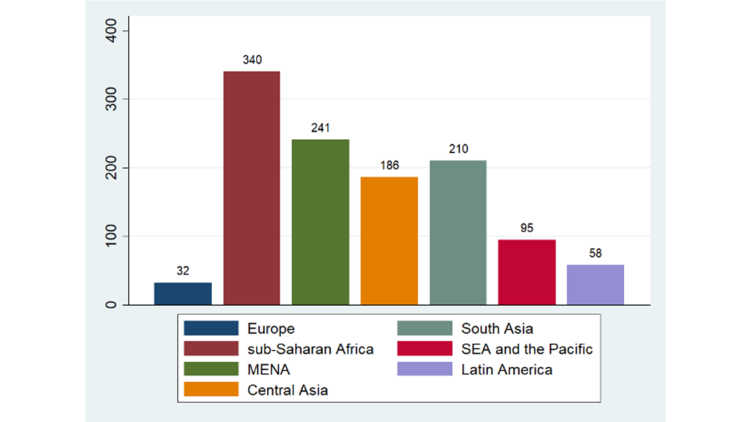
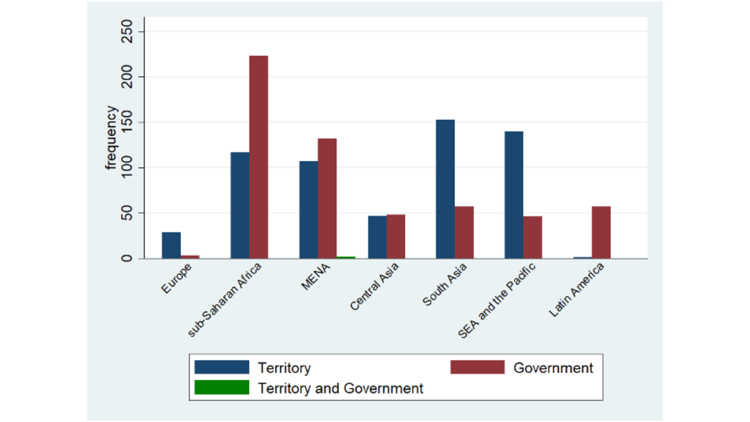
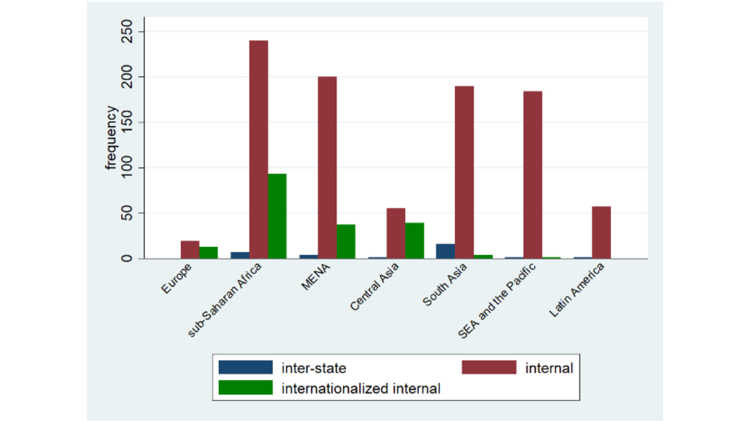
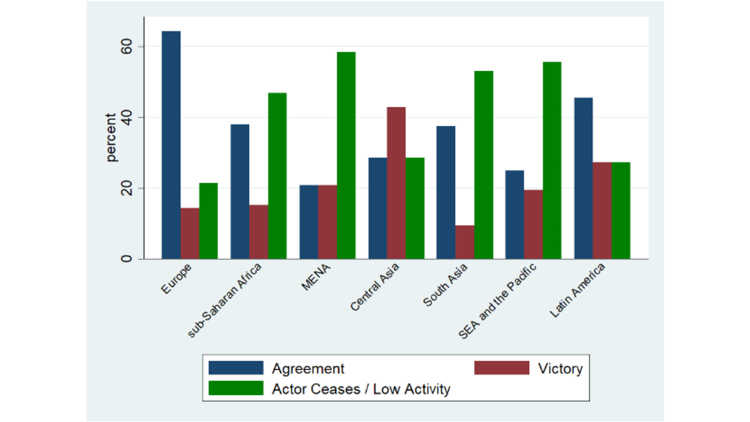
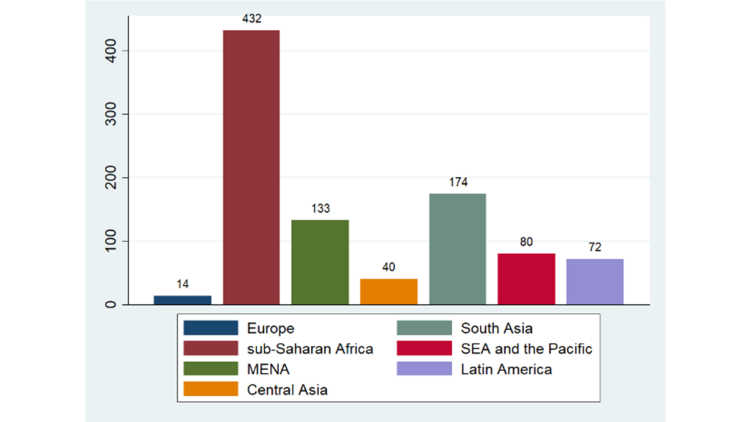
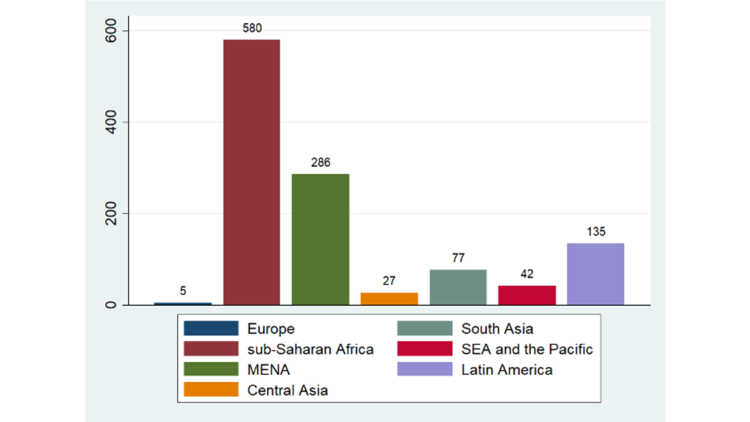
Regional Peace Formations (RPFs) – The Concept
Due to the variation per regional patterns, the regional dimension should thus be integrated into our conception of peacebuilding and the ensuing programmes for pursuing it. However, understanding the role of regional politics in preparing for the transition from war and violence to more peaceful settings necessitates taking a fresh look at how regional dynamics contribute to the initiation and escalation of violence within a defined state. To this end, shifting the analytical focus to the regional level requires the adoption of new epistemological tools that take regionalism as the point of reference for fathoming how some regions play constructive roles in ending violent intra-state conflicts while others render peacebuilding endeavours difficult to achieve.
Based on the model of “regional conflict formation” (RCF) (Rubin, Armstrong, and Ntegeye 2001), two basic analytical types of regional settings (i.e. convergent and divergent) emerge. The different characteristics of each type might explain the variance in peacebuilding outcomes that we observe from one region to the other. The RCF model is relevant here because it helps to include more actors than just international/local players in the analytical locus, and thus contributes to bridging the gap between the local and the international. More importantly, being attentive to the regional dimension could necessitate the revision of some of the concepts, such as “local ownership,” which are frequently advocated by certain strands of the literature on peacebuilding. Analytically, RPFs consist of the following social “kinds” or ontologies:
Actors
(1) States. Regional states play a constitutive and fundamental role in conflict transformation by possessing a multitude of relevant tools. For example, cross-regional elite connections may prove influential in forming alliances and initiating de-escalation measures. Further, the states of a region usually share economic, social, cultural, and security interests upon which common strategies can be drawn. However, the stance and impact of strong/large regional states might be indispensable for forging coalitions, creating or activating defence pacts, and for collaborating with and invigorating regional organisations (ROs) for the achievement of region-wide solutions to intransigent intra-state violent conflicts. Additionally, this state-based rationale could also be applied to the specific type of regime in power that controls the institutions of the state.
(2) ROs. RPFs are characterised by proactive and engaging ROs, which have the institutional capital of being historically embedded within their regions in ways that allow them to impose authority and to monitor events (for example ceasefire and anti-smuggling agreements), as well as to activate mechanisms that range from mediation to the deployment of armed forces. Again, the influence of ROs correlates with the extent to which they have been historically adopted and recognised by the regional – and mainly the big – states as institutions for peace and regional cooperation.
(3) Militias, paramilitaries, and non-state armed groups. The motives for armed groups’ formation (such as greed and grievance) are to be expected in both convergent and divergent RCFs. However the agency and autonomy of armed groups dwindle in RPFs, which demonstrate efficiency in pursuing goal-oriented strategies for disarming and demobilising non-state armed groups. Examples include cutting off their sources of financing and strangling the usual transborder logistical routes which sustain them. Alternatively, regional states which aim at defeating a regional bloc benefitting from conflict may harness their mobilisation capabilities so as to form their own militias that then fight along their formal armed forces.
Conflict Dynamics
The seemingly static positioning of regional actors might be put to the test, and hence they become engaged, due to the manner in which the conflict at hand unfolds. With the passage of time, intra-state violence could threaten the entire regional security architecture. In this context, previously uninvolved states sense the potential jeopardy to their domestic stability should the conflict spill over to affect their status and interests. Also, for mature and embedded regional institutions, the threshold of inaction is fragile and thus their engagement is posited to occur at the early stages of a given conflict’s escalation. Further, what is distinctive about RPFs is their resilience in responding to emerging escalations, due to established institutional cultures of addressing similar threats and working collectively with regional stakeholders to design concrete and concerted plans to counteract them.
The following will provide a short overview of the importance of such a regional perspective for three world regions, highlighting important differences regarding respective conflict and peace formations. Latin America is important for its ending of war and armed conflict but high levels of social and criminal violence. The Middle East is currently the main international “war theatre.” Sub-Saharan Africa is a region with a very interesting regional peace architecture meanwhile.
Latin America – A Zone of Peace?
Latin American governments declared the region a “zone of peace” at the summit of the Comunidad de Estados Latinoamericanos y Caribeños (CELAC) in Havana on 27 January 2014. Under a peace concept limited to the absence of war or armed conflict, as the data provided by the Uppsala Conflict Data Program represents, Latin America would thus indeed be a zone of peace. However there have always been other forms of violence in the region, ones that have become more prominent in the twenty-first century. Interpersonal, social, and criminal violence make Latin America the most violent region in the world. Homicide rates are among the highest worldwide in some countries, and above the level classified as a pandemic by the World Health Organization in most of the region. While the academic debate analyses these types of violence separately, they are in fact interrelated and overlap on the ground. The RPF is shaped by the absence of a state monopoly on force and a lack of constructive conflict transformation.
Democratisation increased the possibilities for political participation via elections, and depending on the specific legislation in the respective countries via other mechanisms such as referenda, consultations, and the like too. However, the “output” of most democratic regimes in Latin America with regard to these issues has been highly deficient. The political systems have been unable, or the governing elites unwilling, to genuinely transform deeply ingrained social conflict beyond the mantra of economic growth and often election-related distributive policies. The year 2019 saw high levels of social mobilisation and protest across the region, being answered by many governments with highly repressive policies.
There are at least two links between the structural conflicts and current types of violence being witnessed in Latin America. First, criminal and social violence find fertile ground in the traditional development patterns based on the extraction of natural resources. This model reproduces social marginalisation, as well as perpetuates a lack of viable livelihoods and of decent work. Second, agents of structural change – such as human rights defenders and representatives of indigenous, social, and ecological movements – have become the main target of contemporary political violence.
While every country and subregion has its specific characteristics, regarding conflict and peace formations there are at least three common features to be found across the Latin American region:
The dominance of traditional/oligarchic elites and their armed allies or non-state actors, not just in rural areas or border regions.
The reproduction of repressive and violent responses to protest and opposition (“iron fist, zero tolerance”), and the militarisation of public-security policies.
The fluidity of borders, where political as well as criminal non-state armed actors can move from one country to another without difficulty.
While Latin American governments have signed many plans and agreements for regional cooperation, peacebuilding, and violence prevention, they seem stuck in path-dependent responses to increasing social conflict. Therefore, the respective political systems and most of their actors face decreasing levels of legitimacy and trust. This is a dangerous mix for the future.
Peace in the Middle East – A Chimera?
The Middle East today represents a region where domestic turmoil, sectarianism, irredentism, state rivalry and failure, humanitarian crises, the proliferation of non-state armed groups, and terrorism have all become characterising features. But depicting armed conflicts as revolving primarily around identity politics is over-simplistic and may lead to misguided policy prescriptions, such as breaking up fragile states along ethno-sectarian lines or even discerning the patterns of conflicts in the region as occurring only because of religious imperatives. What is needed, contrariwise, is a nuanced look at the dynamics of conflict formation and transformation in the Middle East (and North Africa), and whether potential peace formations could emerge and be capitalised on for designing effective peacebuilding initiatives.
The Arab Spring uprisings have played a role in the erosion of the regional order in the Middle East, but without presenting clear features of a new one in the making. As a result, alliance configurations in the region oscillate between two general patterns: (1) the escalation of enmities, such as between Saudi Arabia and Iran, and (2) the breakup of previous alliances, as exemplified by the recent Gulf Cooperation Council (GCC) crisis and the ensuing Saudi/Emirati-led boycotting of Qatar. These patterns are not mutually exclusive; rather, they feed into each other – with consequences that transcend the Gulf region in spreading to countries like Iraq, Syria, and to Libya in North Africa. Further, these regional dynamics have had an effect on the strength and persistence of non-state armed groups, and also on the coherence and influence of ROs such as the League of Arab States (LAS) and the GCC.
Scrutinising the escalation of violence in the Middle East, as well as the patterns of rivalry and of alliance formation and transformation, reveals that envisioning peace should be region-sensitive and embedded within the regional structures of power; include state, sub-state, and supra-state actors; and, incorporate both formal and informal institutions of war-making and peacebuilding.
In contrast to Latin America, interstate conflicts play a major role in the Middle East. Saudi-Iranian rivalry reflects a seemingly rigid and deep-seated confrontation on both the material and ideational levels, whereas the intra-Gulf disputes might be more issue-based and less intractable in existential terms. Further, what contributes to the absence of RPFs in the Middle East is the nonexistence of influential ROs, due to intra-organisational fragmentation among member states. Hence, the gaps that arise from state weakness, fragility, or collapse are not filled by organisational plans and actions; instead, a plethora of non-state armed groups vie for the taking over of the spaces left vacant by the state – which, in turn, constitutes fertile ground for rival states to invest in conflict and violence escalation.
In sum, peacebuilding in the Middle East should be looked at through the prism of the region and with attention paid to the manner in which RCFs can shift from divergence to convergence – thus creating space for RPFs to emerge. For international donors and peacebuilders like the UN and the European Union, peace in the region thus needs to be coupled with transforming the zero-sum modality of conflict into a setting where collective solutions are possible. In addition, ROs need to be strengthened in order to compensate for state weakness and to work as focal points for coordinating constructive momentum.
Sub-Saharan Africa – Concrete Moves towards RPFs?
Sub-Saharan Africa arguably resembles the Middle East in terms of the spread of violence and conflict dynamics. The region had, by the end of the 1990s, witnessed the genocide in Rwanda (1994), the First Congo War (1996–1997), an ethnic war in Burundi (1993), in addition to numerous military coups continent-wide. The majority of conflicts in sub-Saharan Africa between 1990 and 2018 remained internal ones, with internal-turned-internationalised armed conflicts, such as the civil wars in Liberia and Sierra Leone, occurring less frequently. At the same time, nearly 50 per cent of the armed conflicts were discontinued due to low activity and/or actors ceasing hostilities. However sub-Saharan Africa differs from the Middle East in terms of its ability to forge RPFs, with the former drawing on a multitude of regional and subregional organisations and institutions possessing an array of mechanisms for conflict prevention and transformation.
A remarkable achievement of the African Union’s Constitutive Act was that it laid the legal foundation for the establishment, in 2002, of the African Peace and Security Architecture (APSA) pillared by eight Regional Economic Communities (RECs) and two Regional Mechanisms (RMs). From diplomacy to military intervention, the APSA draws on a multitude of tools to ensure peace and security in sub-Saharan Africa. Similarly, regionally powerful and influential states may contribute to or hinder the materialisation of the related designs of the APSA and the RECs in a given context.
In 2016, 28 out of 67 conflicts (42 per cent) were addressed by the APSA (Ntab and Bekele 2018: 9). Consequently, the report concludes that 78 per cent of interventions were successful or partly successful. While policymakers, practitioners, and academics might debate the interpretation of this portrayal of the APSA’s efficiency, the message which interests us is that when compared to the institutions and organisations of the Middle East (mainly the LAS and the GCC) and their capacity to curb the tide of violence and wars sweeping that particular region, sub-Saharan Africa, and the AU more broadly, emerge as a conglomerate of various subregions which have managed to create and develop regional and subregional peace formations that are underpinned by a complex legal, political, organisational, institutional, and operational infrastructure that avails itself of a wide range of mechanisms – such as mediation, sanctions, and military intervention. These RPFs prove indispensable for achieving the sub-Saharan African strategic objectives of conflict prevention, transformation, and resolution, as well as of peace-making and peacekeeping. Also, the rivalry between the swing states in the Middle East (mainly Iran, Saudi Arabia, and Turkey) makes them pale in comparison with their African counterparts in regard to conflict de-escalation, peace-making, and peacebuilding efforts.
However, this should not lead us to falsely assume that the sub-Saharan RPFs are flawless or that conflicts on the continent are ebbing away completely. Rather, miscellaneous challenges confront the AU and its various peace and security organs. Examples include shortcomings in regard to logistical support and planning, alongside the slowness with regard to decision-making at the APSA’s Peace and Security Council when it comes to emerging conflicts or crises.
In conclusion, the challenges that lie ahead for the AU and its various peace and security institutions demand long-term coordination between the different agencies involved, with the need to find more efficient avenues of self-reliance regarding funding particularly. Yet, what the study of sub-Saharan Africa shows is that the regional ability to found and consolidate RPFs could be a prerequisite for moving from violence and war to peace. Phrased differently, the absence of such peace formations in tandem with no will on the part of the regional swing states to cooperate in preserving peace and resolving conflict in the Middle East is what makes peace in the latter region chimerical. This leads again to the emphasis of a fundamental point: the regional context matters.
Implications for International Peacebuilding Support
International organisations and donors face a series of challenges in their policies of peacebuilding support that adopting a regional perspective might help overcome. Every armed conflict and war is unique, as is every peacebuilding process. However, there are regional patterns shaping conflict as well as peace formations at the intersection of global developments and local specificities. “Global” peacekeeping efforts by the UN, the EU, other multilateral institutions, or by transnational non-governmental organisations can only succeed in supporting peacebuilding if they account for local as well as regional contextual conditions. As such, they need to take into account transborder military, political, economic, and social networks in the regions because they exert significant influence on conflict and peace dynamics – no matter if at the interstate or intra-state level. The presence or absence of regional powers or swing states, ROs, or of cross-border militias, paramilitaries, or criminal groups influences peacebuilding efforts in one way or another.
Over the last few decades peacebuilders have made a significant effort to increase the analysis of contexts, especially at the local level. However, the regional one has been largely ignored – with the exception of the outsourcing of peacebuilding to ROs, as in the “African solutions to African problems” approach. Regional peace and conflict formations need to be included beyond this cooperation, while multilateral institutions, donors, and other actors involved in the peacebuilding domain need to pay close attention. Peace and conflict assessments need to factor in these regional developments.
The current situation in the Middle East shows that local peace initiatives are not viable if regional and geopolitical power dynamics persist and fuel neighbourhood conflicts like in Syria or Yemen. The zone of peace in Latin America demonstrates that violence needs to be addressed beyond its collective, organised manifestation on the basis of political aims – that is, in the form of war. At the same time, the Latin American region shows that its peace architecture is unable to confront the related security problems and to develop innovative peacebuilding approaches. In most of Latin America vested interests prefer traditional repressive strategies, intensifying violence most of all for civil society and reform-oriented actors such as human rights defenders. The African continent, home to many ROs and to reasonably well-functioning peace mechanisms, serves as an example for the value added by regional integration – even in the face of persisting conflict. The better subregional organisations and regional integration work, the more chance for peacebuilding success there is.
All world regions have in common the existence of different transnational actors who pose a serious threat to both local and regional peace. In Latin America, it is criminal networks that are responsible for thousands of fatalities every year. In the Middle East, it is mainly transnational terrorist organisations like Al-Qaida or ISIS and the overarching “Cold War” between Saudi Arabia and Iran and their respective constituencies that have this effect. In sub-Saharan Africa, it is mostly militias and paramilitary groups who make strategic use of porous borders and a lack of state security in remote areas. However, all these actors can only prosper in cooperation with national elites and local allies. They need to be analysed, included, or marginalised in peacebuilding policies.
The regional level offers the possibility for meaningful donor coordination and joint multilateral action, but this should not lead to a minimalistic approach seeking only the end of war or a certain degree of stabilisation. All initiatives need a clear focus on long-term peacebuilding, as a process of social change required for the constructive transformation of conflict. Regional economic and social networks are central to sustainable development, and to transforming structural conditions – leading either to the violent escalation of conflict or to the fostering of more peaceful societies.
Footnotes
References
Ahram, Ariel, Patrick Köllner, and Rudra Sil (eds) (2018), Comparative Area Studies. Methodological Rationales and Cross-Regional Applications, New York: Oxford University Press.
Boutros-Ghali, Boutros (1992), An Agenda for Peace. Preventive Diplomacy, Peacemaking and Peace-Keeping, A/47/277, www.jstor.org/stable/20693723 (25 January 2021).
Gleditsch, Nils Peter, Peter Wallensteen, Mikael Eriksson, Margareta Sollenberg, and Håvard Strand (2002), Armed Conflict 1946-2001: A New Dataset, in: Journal of Peace Research, 39, 5, 615–637.
Kreutz, Joakim (2010), How and When Armed Conflicts End: Introducing the UCDP Conflict Termination Dataset, in: Journal of Peace Research, 47, 2, 243–250.
Lewis, David, John Heathershaw, and Nick Megoran (2018), Illiberal Peace? Authoritarian Modes of Conflict Management, in: Cooperation and Conflict, 53, 4, 486–506.
Ntab, Michelle Ndiaye, and Melhik Bekele (2018), APSA Impact Report 2016. Assessment of the Impact of Interventions by the AU and RECs in 2016 in the Frame of APSA Trends and Core Findings, Institute for Peace and Security Studies, www.giz.de/en/downloads_els/C4C%20Event%20-%20Assessment%20of%20the%20Impact%20of%20Interventions%20by%20the%20AU%20and%20RECs%20in%202016%20in%20the%20frame%20of%20APSA%20.pdf (13 May 2020).
Paris, Roland (2004), At War’s End: Building Peace after Civil Conflict, Cambridge: Cambridge University Press.
Pettersson, Therése, and Magnus Öberg (2020), Organized Violence, 1989–2019, in: Journal of Peace Research, 57, 4, 597–613, https://doi.org/10.1177/00223 43320934986.
Rubin, Barnett R., Andrea Armstrong, and Gloria Ntegeye (2001), Conceptual Overview of the Origin, Structure, and Dynamics of Regional Conflict Formations. Draft Discussion Paper I for the Conference on Regional Conflict Formation in the Great Lakes Region of Central Africa: Structure, Dynamics and Challenges for Policy, Nairobi, Kenya.
Sundberg, Ralph, Kristine Eck, and Joakim Kreutz (2012), Introducing the UCDP Non-State Conflict Dataset, in: Journal of Peace Research, 49, 2, 351–362, https://doi.org/10.1177/0022343311431598.
General Editor GIGA Focus
Editor GIGA Focus Global
Editorial Department GIGA Focus Global
Research Programmes
How to cite this article
Almohamad, Selman, Markus A. Kirchschlager, and Sabine Kurtenbach (2021), Neighbourhood Matters for Peacebuilding, GIGA Focus Global, 1, Hamburg: German Institute for Global and Area Studies (GIGA), https://nbn-resolving.org/urn:nbn:de:0168-ssoar-71419-0
Imprint
The GIGA Focus is an Open Access publication and can be read on the Internet and downloaded free of charge at www.giga-hamburg.de/en/publications/giga-focus. According to the conditions of the Creative-Commons license Attribution-No Derivative Works 3.0, this publication may be freely duplicated, circulated, and made accessible to the public. The particular conditions include the correct indication of the initial publication as GIGA Focus and no changes in or abbreviation of texts.
The German Institute for Global and Area Studies (GIGA) – Leibniz-Institut für Globale und Regionale Studien in Hamburg publishes the Focus series on Africa, Asia, Latin America, the Middle East and global issues. The GIGA Focus is edited and published by the GIGA. The views and opinions expressed are solely those of the authors and do not necessarily reflect those of the institute. Authors alone are responsible for the content of their articles. GIGA and the authors cannot be held liable for any errors and omissions, or for any consequences arising from the use of the information provided.










